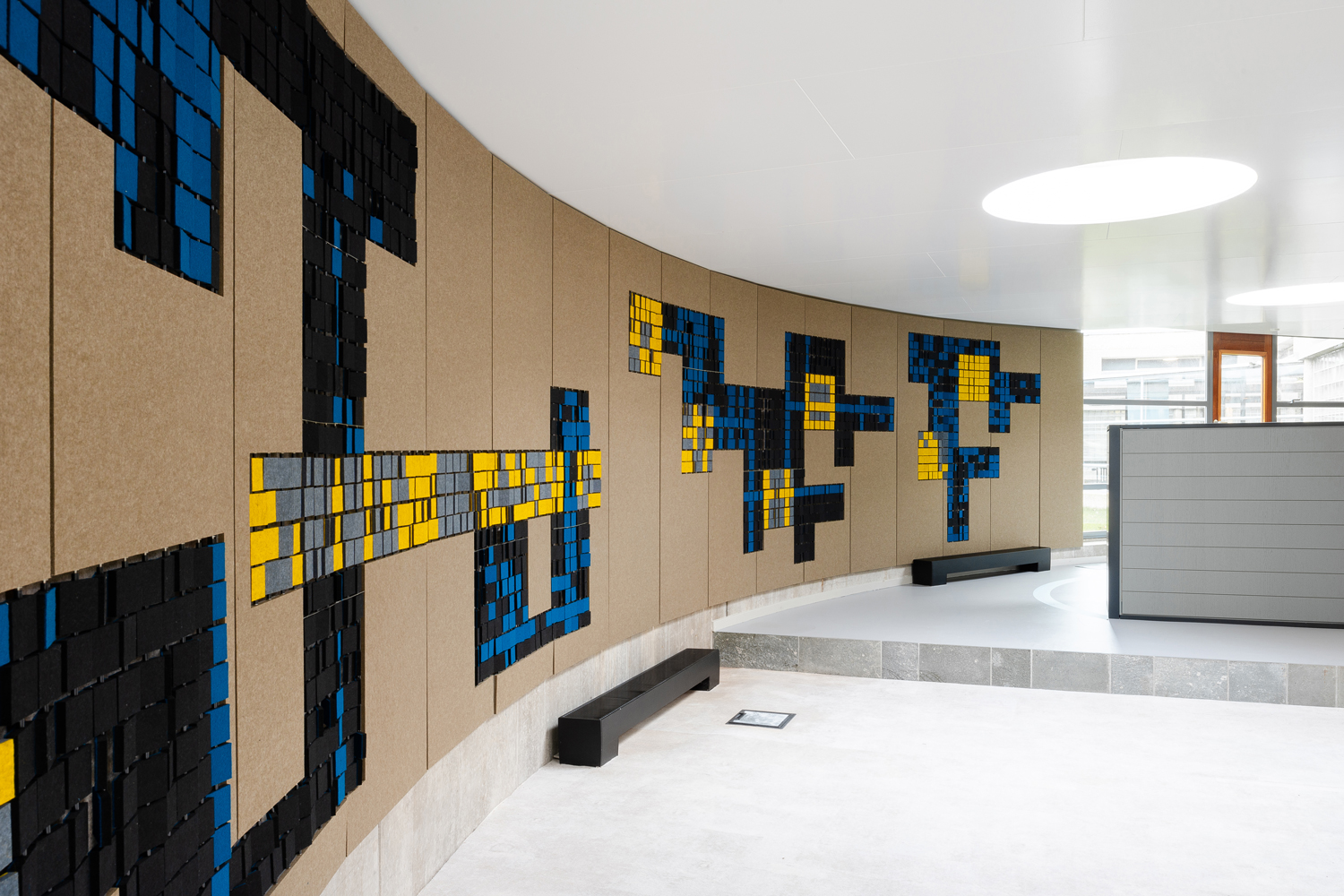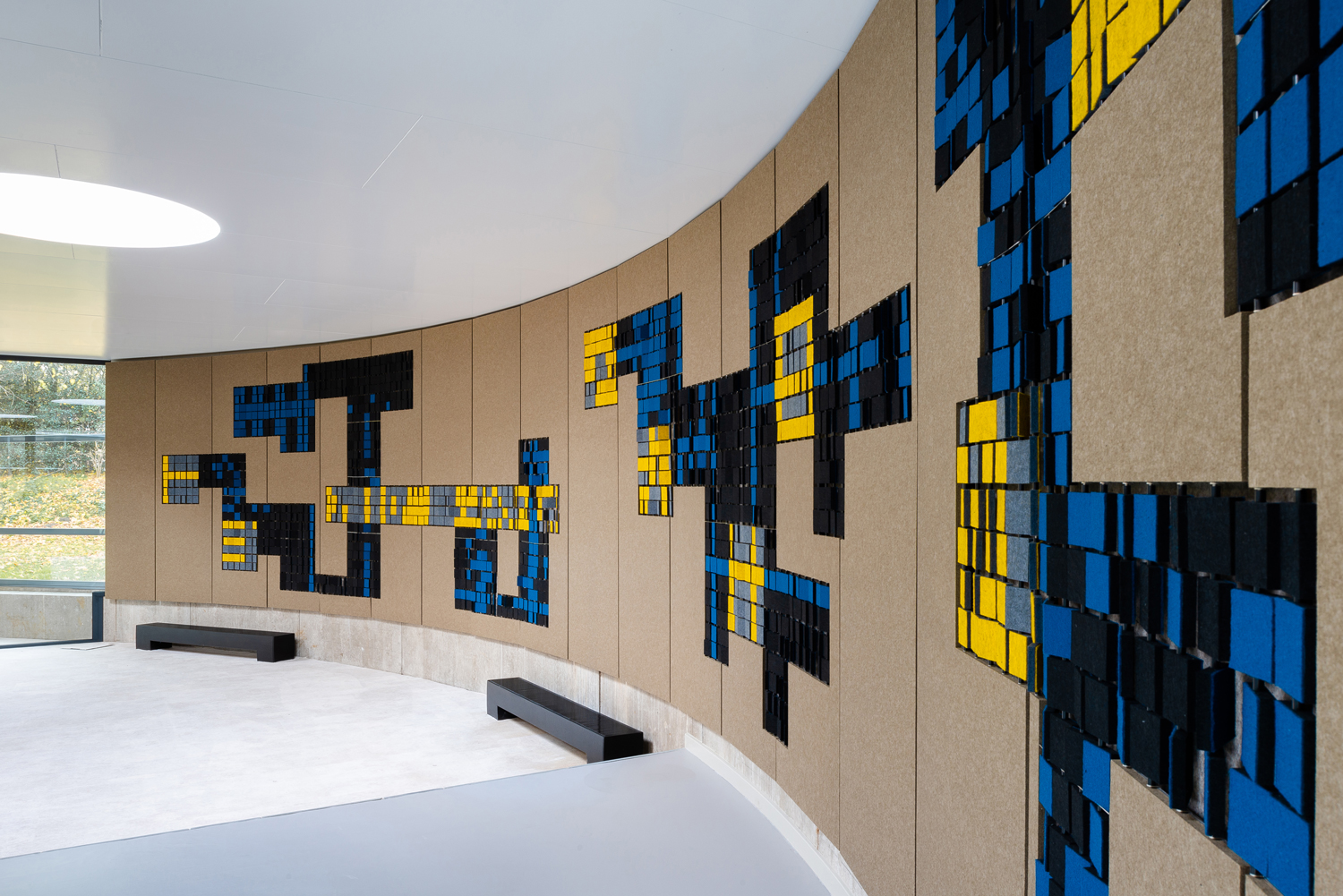PROJECTS
Studies in Vilt
Art Chapel, Beatrixpark
Common Places
GLUE Amsterdam
the Hotel Chronicles
Lloyd Hotel
Speelwerk
BPD, Burgerweeshuis
+ archive
Studies in Vilt
Art Chapel, Beatrixpark
Common Places
GLUE Amsterdam
the Hotel Chronicles
Lloyd Hotel
Speelwerk
BPD, Burgerweeshuis
+ archive




pictures by MWA Hart Nibbrig
Installation
Burgerweeshuis Amsterdam
material
PET felt, wool felt
mdf, aluminium and stainless steel
size
1100 x 180 cm
commissioner
Bouwfonds Development Projects
SPEELWERK
Amsterdam’s Burgerweeshuis (city orphanage) was designed in 1960 by Aldo van Eyck, as a place for children to live and play. Both functions, living and playing, are thoroughly embedded in the architecture, with visual passages, distorting mirrors, sunken play areas, differences in height and small steps up and down.
In 2018 the Burgerweeshuis was taken over by Bouwfonds Project Development (BPD). The old function room is now used by BPD as a meeting room. From the outset, the space had a problem with its acoustics.
I was asked to create a graphic, wall-sized tactile piece that would correct the sound problem but also engage with the special history of this heritage site.
Speelwerk (play-work) is an installation of 1,752 small squares of PET felt with wool felt. Each square can rotate on its axis and changes colour when it does.
The wall is interactive and tempting to touch and play with, a principle that harks back to Van Eyck’s philosophy. The pattern comes from the distinctive grid that is the building’s geometric floorplan.
Amsterdam’s Burgerweeshuis (city orphanage) was designed in 1960 by Aldo van Eyck, as a place for children to live and play. Both functions, living and playing, are thoroughly embedded in the architecture, with visual passages, distorting mirrors, sunken play areas, differences in height and small steps up and down.
In 2018 the Burgerweeshuis was taken over by Bouwfonds Project Development (BPD). The old function room is now used by BPD as a meeting room. From the outset, the space had a problem with its acoustics.
I was asked to create a graphic, wall-sized tactile piece that would correct the sound problem but also engage with the special history of this heritage site.
Speelwerk (play-work) is an installation of 1,752 small squares of PET felt with wool felt. Each square can rotate on its axis and changes colour when it does.
The wall is interactive and tempting to touch and play with, a principle that harks back to Van Eyck’s philosophy. The pattern comes from the distinctive grid that is the building’s geometric floorplan.

